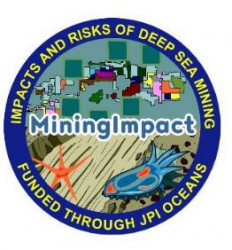
In the second project phase of MiningImpact, we will extend our previous work towards three major research interests concerning deep-sea mining: (1) the larger scale environmental impact caused by the suspended sediment plume, (2) the regional connectivity of species and the biodiversity of biological assemblages and their resilience to impacts, and (3) the integrated effects on ecosystem functions, such as the benthic foodweb and biogeochemical processes. In this context, key objectives of the project are: • To develop and test monitoring concepts and strategies for deep-sea mining operations • To develop standardization procedures for monitoring and definitions for indicators of a good environmental status • To investigate potential mitigation measures, such as spatial management plans of mining operations and means to facilitate ecosystem recovery • To develop sound methodologies to assess the environmental risks and estimate benefits, costs and risks • To explore how uncertainties in the knowledge of impacts can be implemented into appropriate regulatory frameworks. While the first phase of project MiningImpact could investigate only experimental and/or rather small-scale disturbances of the seafloor, in the second phase a comprehensive monitoring program will be devoted to the industrial test of the prototype nodule collector system of the Belgian contractor DEME-GSR. The test intends to harvest nodules in approx. 300×300-m2 large areas of the seabed in the Belgian and the German contract areas of the CCZ. Thus, MiningImpact 2 will collect independent scientific information on the environmental impacts of this operation. Here, the primary focus is on constraining and quantifying the temporal dynamics and characteristics of the suspended sediment plume, the spatial footprint of the deposited sediment blanket, and the induced effects on the abyssal ecosystem. Thus, MiningImpact 2 will be able to further close existing knowledge gaps and reduce uncertainties on the environmental impacts of deep-sea mining of polymetallic nodules. The project will specifically work towards policy recommendations and, therefore, has reached out to the International Seabed Authority (ISA) to become a partner in the project. These overall aims are also reflected in the project structure (Section 3): three work packages (WPs) address the biodiversity, connectivity and resilience of biological assemblages (WP1), the impact and behaviour of the sediment plume (WP2), and benthic ecosystem functions and processes (WP3), while WP4 facilitates data exchange and archival in the project and develop advanced video/photo annotation technology. Three cross-cutting themes (CCTs) ensure integration of the different aspects into a coherent work flow at sea to accomplish an effective monitoring of the collector trial (CCT1), of the scientific results into a comprehensive assessment of the environmental impacts (CCT2), and into joint policy recommendations on risks and best practices of deep-sea mining operations (CCT3). WP5 will coordinate the project activities and communicate and disseminate project results.